What Materials Do Painters Need?
What Materials Do Painters Need?
Painting a house enhances its aesthetics and protects indoor surfaces by sealing out moisture. Painted surfaces are also easier to clean, and they repel dust, allergens, and dirt. A Long Island painter needs to have knowledge, skill, and experience in paint jobs to achieve an excellent painting result. It’s also crucial to possess the right painting materials. In this article, we’ll explore the what materials do painters need to complete this task.
Cleaning Materials
Before any paint job, it’s vital to clean the surface to be painted. For this purpose, you’ll need sanding blocks and sandpapers of different grit or steel wool for cleaning any corrosion or rust on metal surfaces. A paint scraper will also come in handy in removing any loose material from the surface. A bristle brush or a wire brush cleans out exterior stone surfaces.
Filling Materials
Another crucial part of the painting process is ensuring that the surface you’re painting is uniform and free of any cracks, seams, gaps, or holes. Here, you’ll need a putty knife to fill the cracks with filler or a caulking gun and caulking tubes if you decide to use silicone.
Surface Protective Materials
Some paint droplets may fall on the floor, carpets, tabletops, or chairs as you paint. To avoid this, you can strategically place drop clothes or use old newspapers, bags, or cardboards along the surfaces you’re painting. You’ll also need masking tape to protect any trim from paint.
Brushes and Rollers
Painting brushes come in during the actual paint job. High-quality brushes are vital to perform an even paint job and minimize bristles. Another necessary tool is a bucket to hold the paint. And if you decide to use rollers, you’ll need a roller tray and grid to load the paint onto the roller.
Ladder and Safety Gear
Lastly, every painter needs an extension ladder to reach elevated surfaces and a step ladder for painting concealing boards or overhead surfaces. It’s also critical to put on personal protective equipment such as painting goggles, safety shoes, a helmet, a pair of painting gloves, and a dust mask.
